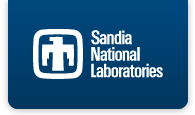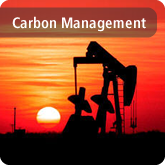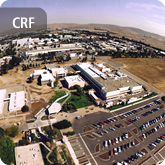X Close
Cynthia A Phillips
Senior Scientist
Sandia National LaboratoriesDiscrete Math Complex Systems Organization
Research Interests: Combinatorial optimization. Algorithm design and analysis, parallel computation, scheduling, network and infrastructure surety, sensor placement, wireless networks, integer programming, graph algorithms, vehicle routing, computational biology, experimental algorithmics, complex network analysis, cybersecurity
Education and Training
Ph.d. in Computer Science 1990
Massachusetts Institute of Technology, Cambridge, Massachusetts
Dissertation: Theoretical and Experimental Analyses of Parallel Combinatorial Algorithms
Selected Publications
R. Murray, T. Haxton, W.E. Hart, and C.A. Phillips, “Real-world case studies for sensor network design of drinking water contamination systems,” Handbook of Water and Wastewater Systems Protection, editors: R.M. Clark, S. Hakim, and A, Ostfeld, Series: Protecting Critical Infrastructure, Springer, New York, 2011, pp. 319-348.
J. Berry, R. Carr, W. Hart, V. Leung, C. Phillips, J.-P. Watson, “Designing contamination warning systems for municipal water networks using imperfect sensors,” Journal of Water Resources Planning and Management, Vol. 135, No. 4, pp. 253-263, July/August, 2009.
R. Murray, W.E. Hart, C.A. Phillips, J. Berry, E. Boman, R.D. Carr, L.A. Riesen, J.-P. Watson, T. Baranowski, G. Gray, J. Herrmann, R. Janke, T.N. Taxon, J. Uber, K. Morley, “U.S. Environmental Protection Agency uses Operations Research to Reduce Drinking Water Contamination Risks,” Edelman finalist paper, Interfaces, Vol. 39, No. 1, pp. 57-68, January-February 2009.
Ostfeld et. al. (one of 34 authors), “The battle of the water sensor networks (BWSN): a design challenge for engineers and algorithms,” Journal of Water Resources Planning and Management, Vol. 134, No. 6, November/December 2008, pp. 556-568.
J. Berry, W. Hart, C. Phillips, J. Uber, and J.-P. Watson, “Sensor placement in municipal water networks with temporal integer programming models,” Journal of Water Resources Planning and Management, Vol. 132, No. 4, pp. 218-24, July/August 2006.
Next up R. Carr
Next up Berry Fleischer
Murray, Regan, William E. Hart, Cynthia A. Phillips, Jonathan Berry, Erik Boman, Lee Ann Riesen, Jean-Paul Watson, Terranna Haxton, George Gray, Jonathan Herrmann, Robert Janke, Thomas Taxon, James Uber, Kevin Morley, “U.S. Environmental Protection Agency uses Operations Research to Reduce Drinking Water Contamination Risks,” Journal Article, JOURNALINFORMS Interfaces, Accepted/Published January 2009.
W. Hart, R. Murray, C. Phillips, “Minimize Impact or Maximize Benefit: the Role of Objective Function in Approximately Optimizing Sensor Placement for Municipal Water Distribution Networks,” World Water and Environmental Resources Congress, 2011.
D. Hart, W. Hart, S. McKenna, R. Murray, C. Phillips, “Integrating event detection system operating characteristics into sensor placement optimization,” 12th Water Distribution Systems Analysis Symposium, September, 2010.
J. Berry, E. Boman, C. Phillips, L.A. Riesen, “Low-memory Lagrangian relaxation methods for sensor placement in municipal water networks,” World Water and Environmental Resources Congress, 2008.
W.E. Hart, J.W. Berry, R. Murray, C. Phillips, L.A. Riesen, J.-P. Watson, “The TEVA-SPOT toolkit for drinking water contaminant warning system design,” World Water and Environmental Resources Congress, 2008.
J.W. Berry, R.D. Carr. W.E. Hart, C.A. Phillips, “Scalable water network sensor placement via aggregation,” World Water and Environmental Resources Congress, 2007.
Jon Berry, Erik Lauer, Henry Lin, Cynthia Phillips, “Scheduling manual sampling for contamination detection in municipal water networks,” Symposium on Water Distribution Systems Analysis, 2006.
 ECIS Highlights
ECIS Highlights













 RSS
RSS Google+
Google+ Twitter
Twitter Facebook
Facebook LinkedIn
LinkedIn YouTube
YouTube Flickr
Flickr






 How does a country whose water supply is as dispersed as the U.S. rapidly and accurately detect contamination of any of it, whether due to natural causes or terrorist activities? Sandia researchers, led by Sean McKenna working with the U.S. Environmental Protection Agency’s National Homeland Security Research Center, have developed award winning software that enables immediate contaminant detection by continuously analyzing signals from networked sensors for unusual responses.
How does a country whose water supply is as dispersed as the U.S. rapidly and accurately detect contamination of any of it, whether due to natural causes or terrorist activities? Sandia researchers, led by Sean McKenna working with the U.S. Environmental Protection Agency’s National Homeland Security Research Center, have developed award winning software that enables immediate contaminant detection by continuously analyzing signals from networked sensors for unusual responses. A joint research team led by Susan Rempe of Sandia National Laboratories and researchers from the University of New Mexico have developed novel biomimetic membranes to purity water through reverse osmosis (RO) technology. These membranes will improve access to clean water, which may be the most important issue facing people worldwide because of its critical role in public health, agriculture and the production of energy.
A joint research team led by Susan Rempe of Sandia National Laboratories and researchers from the University of New Mexico have developed novel biomimetic membranes to purity water through reverse osmosis (RO) technology. These membranes will improve access to clean water, which may be the most important issue facing people worldwide because of its critical role in public health, agriculture and the production of energy.
